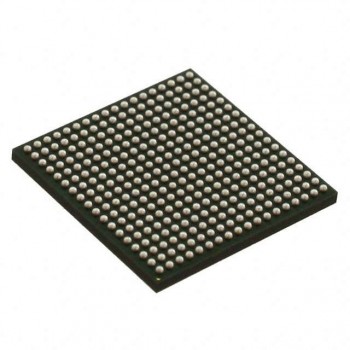In the realm of embedded electronics, microcontroller units (MCUs) have emerged as the brains that command, control, and integrate a wide array of systems. Serving as the central processing hub for applications such as automotive automation systems, health monitoring devices, home automation, and countless others, MCUs define the digital landscape and our increasingly interconnected world. At the heart of these microcontrollers lies a fascinating numerical architecture: MCU digits. In this popular science article, we will delve into the fundamental role of digits in the world of microcontrollers, unraveling the underlying codes responsible for their impressive capabilities.

The Essence of MCU Digits: Bits and Bytes
To comprehend the connection between MCU digits and microcontroller performance, one must first consider the language of digital electronics: bits and bytes. A 'bit' is the most basic unit of digital information, represented as a binary value - either a 0 or 1. 'Bytes,' on the other hand, are sequences of eight bits, serving as the foundation for more complex data constructs.
The digits in MCUs refer to the bit-depth or bit-width of their various components, such as registers, data buses, memory, and address space. As such, the nomenclature of MCU digits signifies the number of bits used to represent digital information in specific microcontroller parts. For instance, an 8-bit microcontroller uses 8 binary digits to encode and process data, while a 32-bit counterpart employs a 32-binary-digit system.
The Impact of MCU Digits on Performance and Capability
The choice of MCU digits holds significant implications for microcontroller performance and functionality. Several key aspects of an MCU are influenced by its bit-width, including processing power, memory capacity, and data handling. Let's explore these aspects more closely:
1. Processing Power: The MCU's arithmetic logic unit (ALU) is responsible for carrying out mathematical and logical operations. A higher bit-width enables the ALU to process larger numbers more swiftly, thereby enhancing the microcontroller’s overall computational capabilities. As such, a 32-bit MCU typically exhibits greater processing power than its 8 or 16-bit counterparts, making it more suitable for demanding applications.
2. Memory Capacity: One crucial feature determined by MCU digits is the address space, which dictates the maximum amount of memory the microcontroller can access. For example, an 8-bit MCU can access up to 2^8 (256) distinct memory locations, while a 16-bit microcontroller can reach 2^16 (65,536) memory addresses. Consequently, higher bit-width microcontrollers offer more extensive memory access, allowing for larger programs and additional storage capabilities.
3. Data Handling: The width of an MCU's data bus, which is responsible for transferring information between the microcontroller's internal components, is also defined by its digits. A wider data bus enables the microcontroller to handle larger chunks of data simultaneously, thereby increasing its overall data processing efficiency.
Weighing the Pros and Cons: Selecting the Right Bit-Width
When choosing the appropriate bit-width for a particular application, there are several factors to consider:
1. Performance Requirements: Applications that demand robust computational capabilities, such as video processing or advanced signal processing, are better suited to 32-bit MCUs, while those with simpler tasks and calculations, such as basic input/output control systems, may find 8 or 16-bit microcontrollers sufficient.
2. Cost and Power Considerations: Lower-bit microcontrollers generally consume less power and are more cost-effective, making them ideal for budget-conscious projects and battery-powered devices. In contrast, higher-bit MCUs often come with increased power consumption and cost, a trade-off for their enhanced performance.
3. Flexibility and Compatibility: It is crucial to consider the compatibility of the selected microcontroller bit-width with the target application's peripherals, sensors, and communication protocols. An MCU with a wider bit-width may be more adaptable and provide better support for existing components or future upgrades.
In conclusion, MCU digits are the numerical building blocks responsible for defining the performance, functions, and capabilities inherent to microcontrollers. By understanding the relationship between bit-width and MCU attributes, one can appreciate the significance of these hidden codes and their influence on the vast world of embedded electronics. Choosing the right bit-width is a crucial step in aligning a microcontroller with the desired project outcomes and developing innovative, efficient, and powerful electronic solutions.
Recommended Articles Related to Microcontrollers:
The Evolution of Medical Equipment: How Microcontrollers are Optimizing Patient Care
How to Debug and Optimize Performance of Microcontrollers: A Comprehensive Guide
Latest Trends and Future Prospects in Microcontroller Technology
How to choose a microcontroller suitable for industrial control
Microcontrollers related brand recommendation
Linear Technology (Analog Devices, Inc.)

